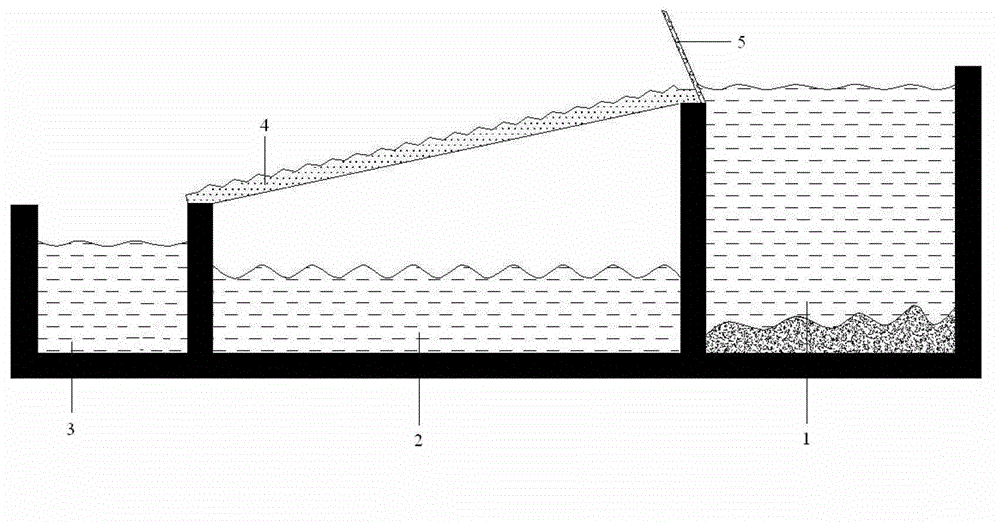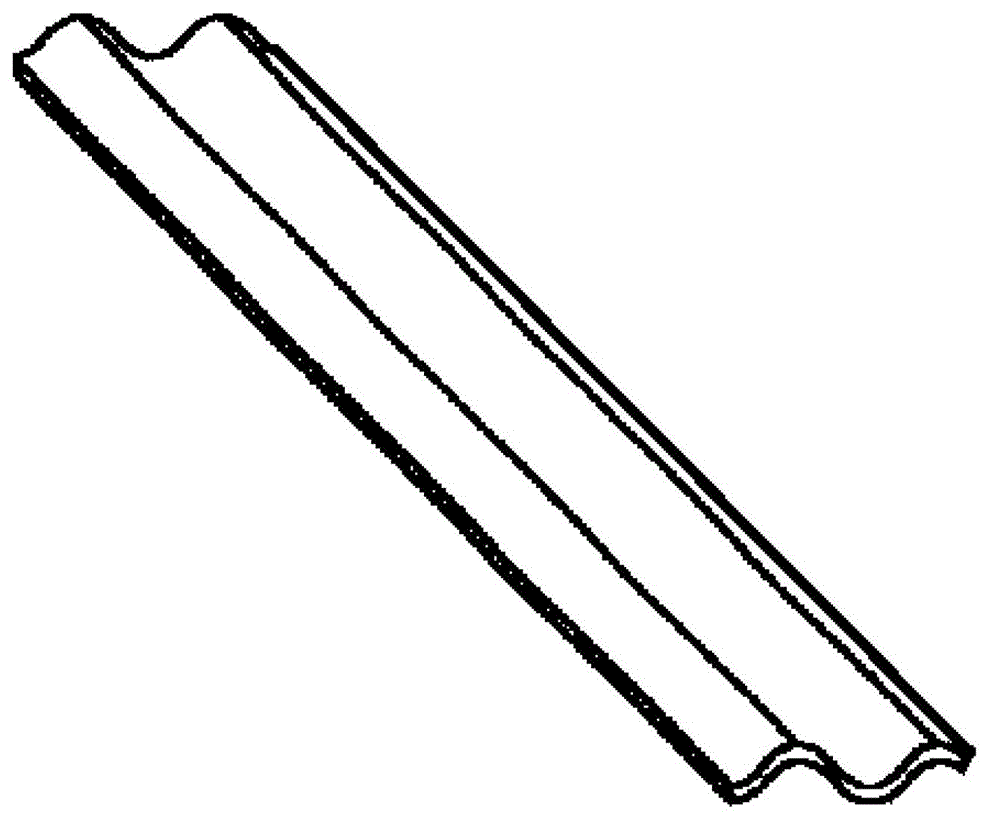Oil-water separation system
An oil-water separation and lipophilic technology, applied in the field of water treatment, can solve problems such as poor separation effect of oil-water separation devices, and achieve the effects of improving oil-water separation effect, enhancing lipophilic and hydrophobic properties, and prolonging residence time.
- Summary
- Abstract
- Description
- Claims
- Application Information
AI Technical Summary
Problems solved by technology
Method used
Image
Examples
Embodiment 1
[0051] Add 100g of quartz sand with a particle size of 0.074-0.085mm to the sand mixer and stir, then add 10g of fluorine-modified epoxy resin to the quartz sand and stir evenly to form a mixture, so that the fluorine-modified epoxy resin is in the quartz sand The surface is covered with a film, and then 0.1g of fine silicon powder with a particle size of 0.015-0.020 microns is added and stirred evenly to make the fine silicon powder adhere to the fluorine-modified epoxy resin, and then 7g of curing agent phenalkamine is added and stirred evenly to promote fluorine For the curing of modified epoxy resin, add 2g of dispersant paraffin before the above-mentioned mixture agglomerates and continue to stir to reduce adhesion. After solidification at room temperature is complete, the obtained mixture is crushed and sieved to obtain coated particles. The coated particles are calcined at 400-600°C for 2 minutes to form a micro-nano composite structure on the surface of the coated partic...
Embodiment 2
[0053] Add 100g of ceramsite with a particle size of 0.085-1.18mm to the sand mixer and stir, then add 1g of silicon-modified epoxy resin to the quartz sand and stir evenly to form a mixture, so that the silicon-modified epoxy resin is in the ceramsite Cover the surface with a film, then add 0.4g of alumina powder with a particle size of 0.015-0.020 microns, and stir evenly to make the alumina powder adhere to the silicon modified epoxy resin, then add 0.5g of curing agent alicyclic amine and stir evenly To promote the curing of the silicon-modified epoxy resin, add 0.5g of dispersant calcium-based grease before the above-mentioned mixture agglomerates and continue to stir to reduce adhesion. After solidification at room temperature is complete, the obtained mixture is crushed and sieved to obtain coated particles. The coated particles are calcined at 400-600°C for 2 minutes to form a micro-nano composite structure on the surface of the coated particles to obtain the final produ...
Embodiment 3
[0055] Add 100g gravel with a particle size of 0.074-0.085mm to the sand mixer and stir, then add 30g polysulfide rubber modified epoxy resin (epoxy resin: polysulfide rubber mass ratio 5:1) to the gravel and mix well Form a mixture, make the polysulfide rubber modified epoxy resin film on the surface of the gravel, then add 9g of a mixture of fine silicon powder and aluminum oxide powder with a particle size of 0.015-0.020 microns, and stir evenly to make fine silicon powder and aluminum oxide powder Adhere to the polysulfide rubber modified epoxy resin, then add 25g curing agent fatty amine and stir evenly to promote the curing of the polysulfide rubber modified epoxy resin. Add 0.3g to disperse before the above mixture agglomerates Lithium-based grease continues to be stirred to reduce adhesion. After solidification at room temperature is complete, the obtained mixture is crushed and sieved to obtain coated particles. The coated particles are calcined at 400-600°C for 2 minu...
PUM
| Property | Measurement | Unit |
|---|---|---|
| particle diameter | aaaaa | aaaaa |
| particle diameter | aaaaa | aaaaa |
| particle diameter | aaaaa | aaaaa |
Abstract
Description
Claims
Application Information
 Login to View More
Login to View More - R&D
- Intellectual Property
- Life Sciences
- Materials
- Tech Scout
- Unparalleled Data Quality
- Higher Quality Content
- 60% Fewer Hallucinations
Browse by: Latest US Patents, China's latest patents, Technical Efficacy Thesaurus, Application Domain, Technology Topic, Popular Technical Reports.
© 2025 PatSnap. All rights reserved.Legal|Privacy policy|Modern Slavery Act Transparency Statement|Sitemap|About US| Contact US: help@patsnap.com



